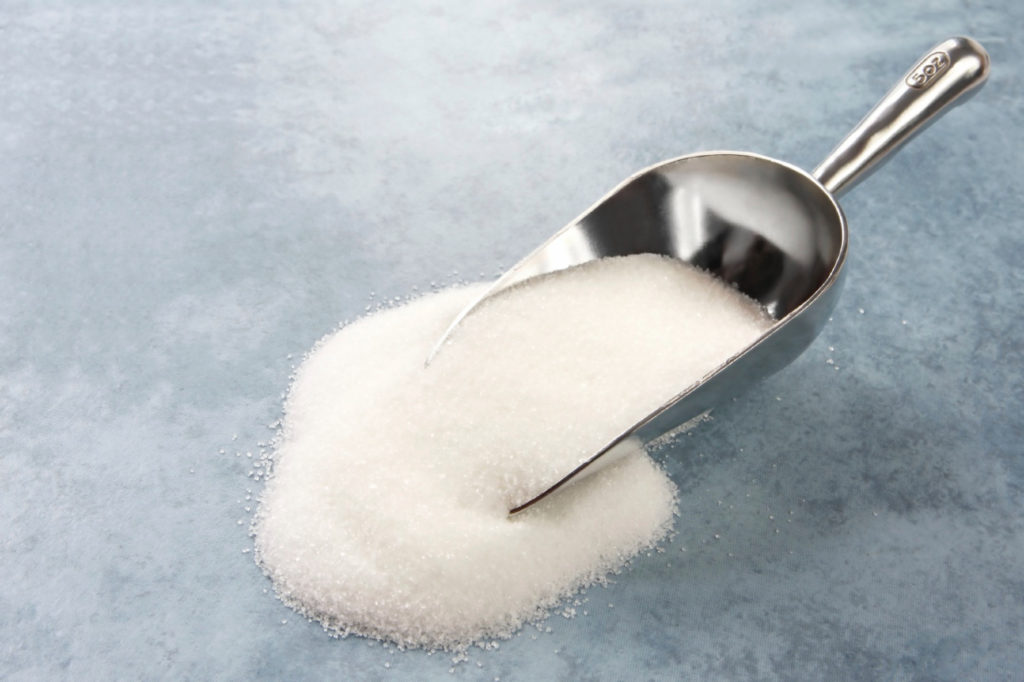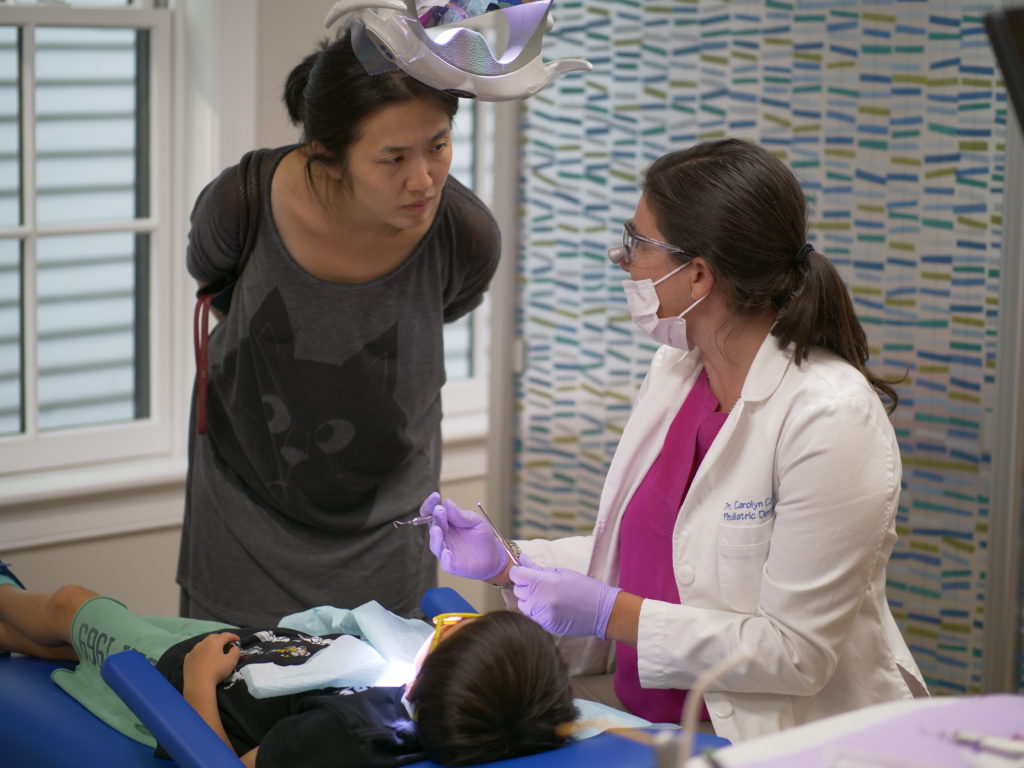It is no secret that sugar and sweets can wreak havoc on the teeth, and oral health in general. However, parents who limit their child’s sugar intake are sometimes perplexed when he or she develops tooth decay anyway. Although a few dental problems can be genetic in nature, the hidden sugars found in some of the most commonly consumed food and drinks are often a factor in tooth decay and cavities. While there is nothing wrong with allowing children the occasional indulgence in sweet treats, Coppe + Sears want parents to be aware of how sugar can affect a child’s teeth, how to avoid the kind of hidden sugars that can impact their overall oral health, and how to give a child the best chance at a healthy smile.
How sugar affects a child’s oral health
While it may be common knowledge that too much sugar can lead to tooth decay, many parents are unaware of exactly how that happens. After sugar is consumed through either food or drink, it will stick to the surface of the teeth if it is not brushed or rinsed away. Existing bacteria in the mouth will use that sugar to feed itself, multiplying quickly as it forms plaque and produces acid. This acid dissolves the minerals that make up the enamel, which is the outer layer protecting teeth, causing tiny holes to begin to form. As these holes become bigger and bigger, a cavity will develop on the tooth. If left untreated, cavities can progress past the enamel and deeper into the tooth, causing pain and possible tooth loss.
Protecting a child’s smile by limiting sugar
Dental health and diet go hand-in-hand. Foods and drinks that are high in sugar can set a child’s mouth bacteria on a feeding frenzy, creating an excess of decay-producing acid. Most people know to steer clear of the obvious culprits like sweetened cereal, candy, and sodas. However, fruit juices and sports drinks are acidic as well as being full of sugar and artificial sweeteners. What about other hidden sugars that nobody expects?
Many hidden sugars come in the form of words ending in “-ose.” Sucrose, dextrose, maltose, fructose, lactose, and glucose are the biggest culprits, and although honey and agave nectar are both touted as a more natural alternative to sugar, the effect they have on teeth is essentially the same. Parents and children benefit from an increased awareness of the ingredients in the food and drinks they are consuming. Some of the most popular items that are full of cavity-causing sugar content:
- Gummy vitamins: have a high sugar content and due to their consistency can get stuck between and on top of teeth for long periods of time. Crunchy vitamins are a better choice if a vitamin has been recommended for a child.
- Flavored Instant oatmeal: pre-packaged oatmeal is full of sugar and additives
- Protein bars: there are better sources of protein that do not contain so much fat and sugar
- Granola: in spite of its healthy reputation, granola is usually thickly coated in sugar or other sweeteners
- Yogurt: most flavored yogurts have almost as much sugar as a bowl of ice cream!
- Crackers/chips: carbohydrates in any form contribute to a higher risk for cavities

If children do consume these products, we recommend they be limited to mealtimes. Parents should avoid offering them in between meals as this gives sugar less opportunity to build up slowly throughout the day. It is helpful for parents to encourage their children to drink water after eating. Juice should not be introduced to infants before one year of age. After that the consumption of juice should be limited to the following: four ounces a day for children ages 1–3 years of age; 4–6 ounces for children 4–6 years of age; eight ounces for children 7–18 years of age. It is also recommended that toddlers should not be given juice in containers that foster easy consumption like a bottle or sippy cup, and that juice should be given only at meal times and not snack or bedtime. Reading labels and watching for hidden sugars, as well as limiting the most well known sources of it, can go a long way towards preventing tooth decay. There are other ways to help protect a child’s smile, including:
Good oral hygiene
The most effective way to remove plaque from the teeth is by brushing regularly and thoroughly. The sooner parents begin to establish a good oral hygiene routine the better. Before any teeth erupt in a child’s mouth a parent can clean the child’s gums with a soft infant toothbrush or cloth and water. Once a child gets their first teeth a parent can begin to brush with a smear of fluoridated toothpaste. It is recommended that a smear size or grain of rice amount of fluoridated toothpaste be used for children under the age of 3. Once a child turns 3 and until the age of 6 a pea-size amount is appropriate. Children should brush with the appropriate amount of fluoride toothpaste for their age for at least two minutes, at least twice a day. Most young children do not have the dexterity to brush alone, so suggest a parent assist them with brushing. If a child is wearing braces or Invisalign we recommend brushing three times per day. Plaque not only attacks the visible surfaces of the teeth, it also accumulates in between them. Ensuring a child is flossing daily will help to break plaque up and remove it before it can cause cavities.
Use fluoride
Routine fluoride use has dramatically reduced the number of children affected by tooth decay over the years. Fluoride is a natural mineral that can not only prevent tooth decay but also reverse it in its early stages. It is often added to community water systems, as well as most toothpastes. Children who drink plenty of fluoridated water and brush regularly with an ADA-approved fluoride toothpaste will have stronger teeth that are less prone to cavities. We also recommend fluoridated mouthwash for children who are able to rinse and spit.
Regular dental appointments
In addition to practicing excellent oral hygiene at home, there is no substitute for regularly-scheduled professional evaluations with a pediatric dentist like Drs. Michael and Carolyn Coppe and Dr. Stephanie Karapetian. To maintain the health of a child’s teeth and gums, Coppe + Sears recommend a routine cleaning and examination every six months to check for any signs of tooth decay or other dental issues.

A lifetime of bright smiles with Coppe + Sears
Parents who limit their child’s overall sugar intake and encourage them to brush and floss away bacteria daily will help to prevent the negative effects sugar can have on their teeth and overall oral health. By being mindful of hidden sugars and following our recommendations, it is possible to keep tooth decay and cavities at bay, setting Lexington area children up with healthy habits to last a lifetime. For more information on how sugar can affect oral health, or to schedule a visit or cleaning with Coppe + Sears, get in touch with our office today. We are here to help preserve the smile of every child we treat!
